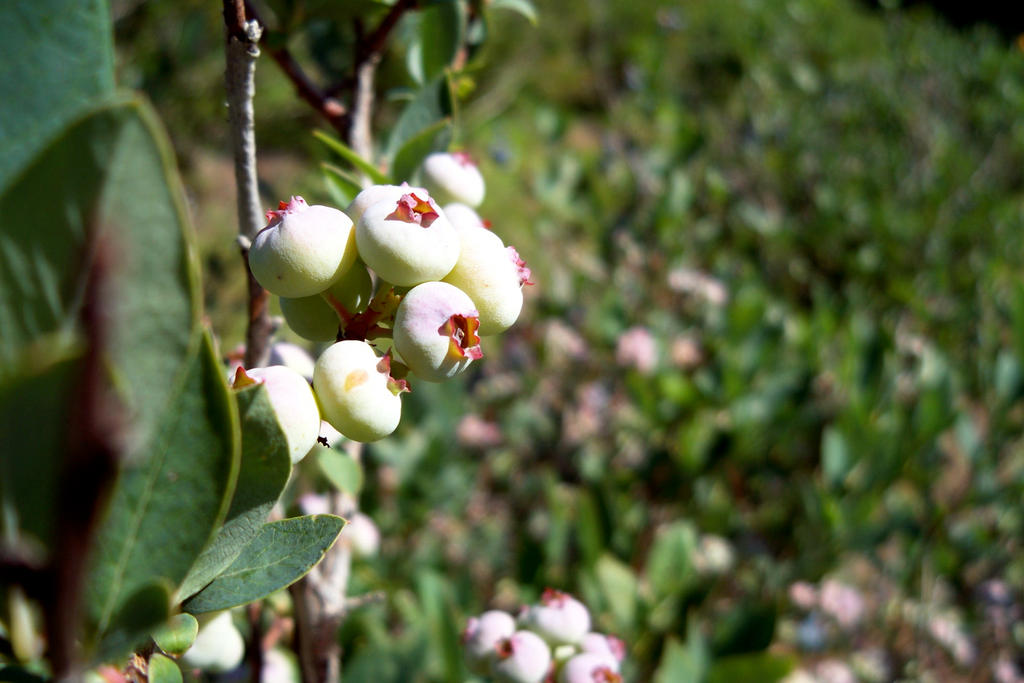As the wild blueberry harvest progresses across Maine, pickers and customers are finding rare surprises in their pint boxes: small white or pink berries that look unripe but are not at all.
These unusual berries are the result of genetic diversity in the state's vast wild blueberry fields.
Most of the berries are blue, with variations in light and dark shades. However, some light purple, pink, or white blueberries lack the pigment that gives most berries their color, a phenomenon similar to albinism.
Albinism in wild blueberries, particularly in the Vaccinium myrtillus species, manifests as a genetic variation that leads to the production of white or pale berries instead of blue ones. This condition has been studied, revealing significant differences in the biochemical composition and gene expression between albino and blue variants.
In a recent report on Fox23Maine, Lily Calderwood, a wild blueberry specialist at the University of Maine Cooperative Extension, explained that a single field can host between 500 and 1,500 distinct genetic individuals. Each year, these genes create a mosaic of colors and shapes in the leaves and berries, occasionally generating albino plants.
Genetic and Biochemical Differences
Albino blueberries show significantly lower levels of anthocyanins, the pigments responsible for the blue color. Specifically, albino blueberries show a 151-fold reduction in total anthocyanin content and a 7-fold reduction in total phenolic compounds compared to blue blueberries. This reduction is linked to decreased expression of several key genes involved in the anthocyanin biosynthesis pathway.
Physical Characteristics
In addition to pigmentation differences, albino blueberries tend to be smaller and hold less water than blue ones. However, they may accumulate more sugar, influencing their flavor profile. Photo: niijo
Photo: niijo
The Mystery of Albino Blueberries
Another result of this genetic diversity is that berries in the same field ripen at different rates, meaning you may also see green blueberries that are not yet good to eat. In early stages, the fruits are acidic before their sugar content rises.
Not much else is known about how albino blueberries develop and under what conditions, nor how their flavor differs or other characteristics that set them apart. Researchers are addressing more urgent issues such as increasing droughts, late frosts, changing pest patterns, new diseases, and labor shortages, Calderwood added.
Research on Albino Blueberries
In 2016, researchers at the University of Ljubljana compared albino and blue blueberries, known as "European blueberries." This species is related to Maine's wild blueberries, found in both Europe and North America.
They found that albino berries contained more sugar and organic acids but almost no antioxidants. Additionally, they were smaller and retained less water. Maine consumers have reported that the lighter berries tend to taste slightly sweeter but are certainly ripe and enjoyable.
![]() Photo: Lvm.lv
Photo: Lvm.lv
Albino Blueberries: A Fascinating Phenomenon
Albino blueberries have fascinated Maine residents for decades. In the 1930s, several people sent reports of white blueberries to the Bangor Daily News, and in one case, brought some directly to the newspaper's office.
In 1942, albino blueberries were exhibited at the Bangor State Fair, and nine years later, a twelve-year-old from Holden received a certificate from the University of Maine confirming that the white berries she had picked were albino, not unripe. Those berries were canned for a 4-H project, according to the BDN.
Albino Blueberries in the Rest of the World
The rest of the country might not find albino blueberries so interesting. In 1990, the Chicago Tribune reported that blueberry breeders had considered developing a line of albino highbush blueberries but doubted that consumers would want them.
If farmers ever requested research on blueberry albinism, it could be done, Calderwood said. However, for now, the university is working on a new S-shaped rake to reduce berry damage during harvest and a camera-driven berry sorter to ease the post-harvest process.
Occurrence and Implications
Albino blueberries are not rare and have been observed in wild blueberry fields, such as in Maine. The presence of these albino variants highlights the genetic diversity within wild blueberry populations and sparks interest in their potential use in breeding programs to improve fruit quality and flavor. In summary, albinism in wild blueberries offers intriguing insights into plant genetic diversity and adaptation.










